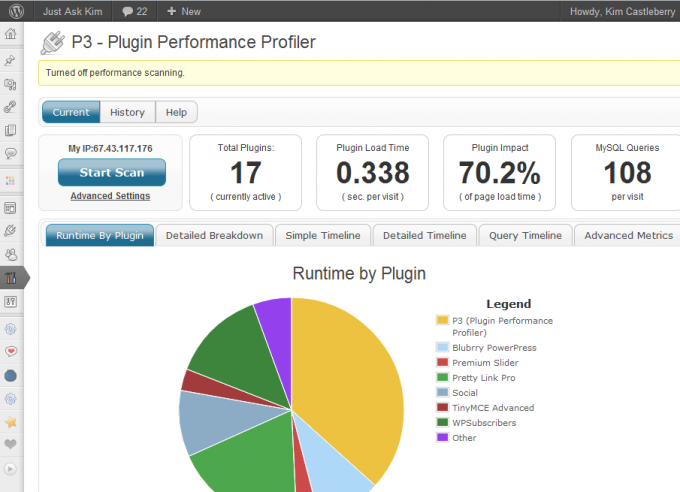Site speed is an increasingly important consideration for web designers. While it’s well known among marketers and SEO experts, site speed has often been overlooked in the world of design. And it’s time for change.
Studies show that just a few seconds, or milliseconds, off your upload time and you’ll see lower bounce rates, improved conversion rates and happier users in general. Based on their own research, in 2009 Google decided that site speed would factor into their search rankings. So not only will your page upload times affect the reception of your site among users, it could also make a difference to their ability to find it in the first place.
The time has come for designers to turn their attention to site speed, and there are many ways to do this.
Cut Time-Consuming Plugins

How To Find Out Which WordPress Plugins Are Making Your Site Slow
There are some WordPress Plug-ins that will help optimize your site speed but most will increase page-load times in a big way. If you can live without them, cut them. If you rely on them, look for another way. Many plug-ins can be replaced by using PHP to write their functionality into your theme. Alternatively, you could look for a different theme that already contains coding for the kinds of functionality your site requires.
Use Speed-Friendly Plugins
Some plug-ins, however, are designed to make your pages load faster. A caching plugin, such as W3 Total Cache will allow files from your site to be stored on users’ browsers, so that when they visit again loading times are reduced.
Integrated into W3 Total Cache is the Meta CDN plugin for WordPress. This gives you access to MetaCDN’s overlay, improve access speed for your users world-wide via their international CDN service. Full instructions on how to integrate the plugin can be found here.
(You’ll find more speed-friendly plugins below.)
Optimize Content and Data
A Detailed Look Into WordPress Database Optimization
Data: Start with the WordPress database, where all site data is stored. The WP DB Manager plugin will do the hard work for you. This handy tool will also clear your database of unnecessary old drafts of posts that were written and then rewritten, saving you an extra few milliseconds.
Content Style: The trend for minimal web design is great news for site speed. Keeping a clean layout with well spaced content, few graphics and simple, straightforward text is a stylish way to boost site speed, while also being in vogue. Need further inspiration? Look here.
Images: Large image files are one of the biggest challengers to your site speed. Always optimize image files prior to upload. Or use another WP tool: WP Smush.it will automatically optimize your images as you upload them, which saves you the trouble of doing it manually in PhotoShop.
In Conclusion
Great site speed is easily achievable for websites of all shapes and sizes and is one of the simplest, most effective ways to give your site’s overall performance a boost. Getting your website running at speed makes your brand look more professional, increases customer/user confidence and could get you more than a few places higher on Google’s search rankings. Get to it.
